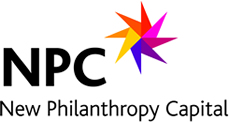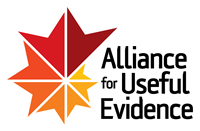Jaan Aps Guest Blog from Estonia: How to excite and influence…with a handbook?
Jaan Aps - Good Deed Foundation and Estonian Social Enterprise Network
The social impact evaluation handbook… many of its kind are gathering dust. There is one – in Estonian – that has recently provoked discussions in the country, whilst also changing how two important civil society financiers provide support. What have been the success factors?
The background
The Good Deed Foundation is the only venture philanthropy fund in the Baltic countries. We support high-impact non-profits and social enterprises. In recent years we have put a lot of effort in to impact evaluation.
The results? Well, there have been no results we are happy to talk about.
The reason for that? We have made (amusingly) many mistakes.
The greatest of them all? Considering impact evaluation as an exclusive R&D project, confined only to our own portfolio organisations, tackled by a (too) small team.
We have learnt that defining, evaluating and communicating ones social impact is a complicated process. Now we believe that creative breakthroughs can be reached only when a large proportion of changemakers are working simultaneously on the topic. As a result we decided to publicise our ideas and lessons up until now – so that they can become ‘freeware’ that any interested parties can try out, comment on and help to develop further.
In principle, a handbook is a good way to systematize ones experience and make it publicly available. But how do you create wider influence with just another handbook? The answer: it should not be like just another handbook.
The influence of the handbook from June to October 2012
The main result: two main financiers of Estonian civil society development – The National Foundation of Civil Society (NFCS) and Open Estonia Foundation – changed their project application forms and assessment criteria. Now these reflect much more the need to define and demonstrate impact. In addition, NFCS decided to announce a special project proposal call to help non-profits and social enterprises to evaluate and communicate their impact. We were acting consultants during the redesign process, but the initiative came from the financiers themselves – after having read the handbook.
We have had many invitations from all over Estonia to consult and discuss the development of social impact evaluation in a variety of organisations, non-profits and social enterprises alike. The interested organisations include some of the most well-known brands in our country, like Estonian Union for Child Welfare.
All in all, impact evaluation itself has become a movement and its principles are a constantly developing freeware in Estonia – instead of a dead-end R&D project inside our own organisation.
What helped us to achieve this? There are three main reasons (plus some luck)
Any handbook has to be like a good customer interface. No matter how complicated the ‘engine’ or ‘software’ inside, the interface has to look bright and exciting, and be as easy to use as possible. Also, any such publication has to be accompanied with ‘customer service’.
1. The writing style
When starting to write, I made an agreement with myself to use boring and fluffy management terminology as little as possible. The result? For example, one of the most overused and least understood terms called ‘strategy’ appears only three times, although the full length of the material is 80 pages.
So – the style of the handbook is very down-to-earth, even conversational. Parts of the publication can almost be read and reflected on as text belonging to fiction. What follows is a small outtake of a table that presents serious check-list content while using fiction-like style. The headline of the table: “Common mistakes we make while trying to express our impact”.
| The mistake | Example of expressing our impact wrongfully or insufficiently |
| Describing our impact only based on intuitive observations. | “I see how the eyes of the children start shining after participating in our activities. We all know that shine in the eyes cannot be faked!” |
| Equalling our efforts with our impact. | “In last five years, I haven’t taken holidays not a single time. Of course, I’ve worked ten hours a day also during the weekends. Any member of our target group can assure you that I’ve been available on any given moment, may it be day or night. If you wouldn’t call it having an impact, how’d you call it?“ |
In the handbook, the table is considerably longer, of course. The style makes the content easy to read, making the check-list amusing tool for provoking the civil society activists.
2. The design
Left side: how one of the impact evaluation materials produced by an Estonian non-profit think tank looks like.
Right side: how our handbook looks like.
Comments are probably not necessary But gratitude is necessary – many thanks for the volunteering designers who made achieving our colourful vision possible!
3. Interaction with others
We organised feedback sessions about the handbook with the financiers of civil society organisations. We asked non-profits and social enterprises to read and provide comments. We gave free training and provided consultancy. And most importantly – while doing all that, we presented ourselves as a team of hopeful changemakers that want to learn with other changemakers how to define, evaluate and communicate our impact better. Because that’s what the goal is. Cultivating these attitudes – rather than acting as ‘mentors’ or ‘experts’ – has helped others to open up and take an equal partnership in the joint adventure.
While being in the process, the vision starts getting bigger. Such as:
To become the first country
that has attractive communication of verified impact evaluation results
integrated to each web page of every civil society organisation by 2016.
We have 1.4 million inhabitants. Thanks to our size, Estonia is a great testing ground. If you want to become part of the adventure by supporting it and / or learning together while conducting similar experiment in your own country or organisation then please get in touch.
Jaan Aps share his time mainly between two organisations: venture philanthropy fund Good Deed Foundation; and Estonian Social Enterprise Network, the advocacy and membership body for social enterprises in his country. His personal web page: www.storiesforimpact.com







+44 (0)207 438 2598
[email protected]
Follow us on Twitter
Join us on LinkedIn
Join us on Facebook
Our photos on Flickr
Subscribe to our Feed